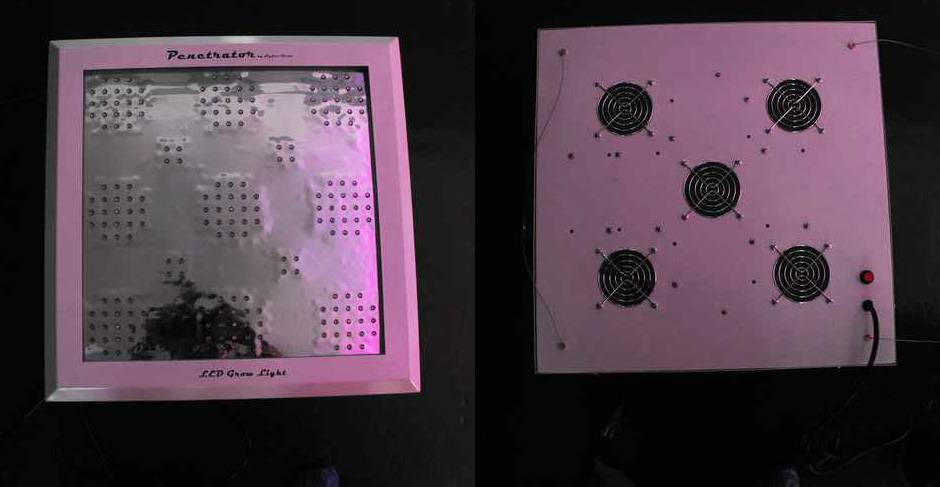As some of you have heard recently, we've been working hard to create a light that a lot of people have been asking for. A light that works extremely well for those square rooms or grow tents that all you gardeners seem to love! This by no means came cheap to us as a company, but we are in business to serve the requests of the consumer, so here's what you asked for!
The Penetrator 205W, is the newest member to our LED Grow Light line-up. It is a square design, measuring approximately 19" x 19" x 3.5", and supplying a maximum footprint of 3' x 3' (30" x 30" recommended). The light features our latest version of light engine, with an output of 85% red, 10% blue, and 5% white. This light is proprietary to Hydro Grow LED, and can be found from no other manufacturer (we own the mould). It features 196W of spectrally targeted light, and 9W of white. The price is $700.00 shipped, making this our most cost-effective unit. As with all of our other models, it comes with a standard 60 degree lens, and optional 30 degree. Contact us via [email protected] to place an order.

The Penetrator 205W, is the newest member to our LED Grow Light line-up. It is a square design, measuring approximately 19" x 19" x 3.5", and supplying a maximum footprint of 3' x 3' (30" x 30" recommended). The light features our latest version of light engine, with an output of 85% red, 10% blue, and 5% white. This light is proprietary to Hydro Grow LED, and can be found from no other manufacturer (we own the mould). It features 196W of spectrally targeted light, and 9W of white. The price is $700.00 shipped, making this our most cost-effective unit. As with all of our other models, it comes with a standard 60 degree lens, and optional 30 degree. Contact us via [email protected] to place an order.

Last edited:





